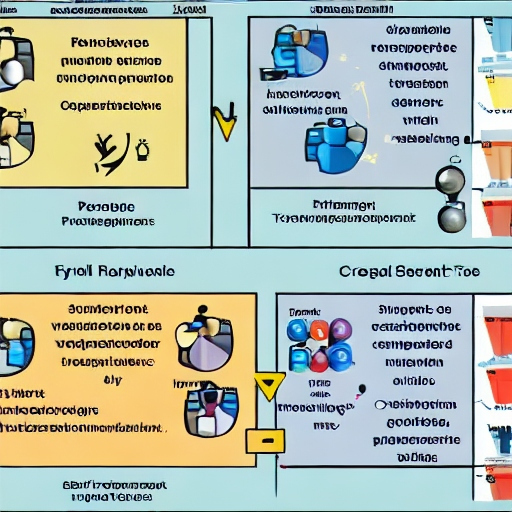What Is Supervised Learning?
Supervised learning is a machine learning approach in which an algorithm learns from labeled training data to make predictions or decisions. It involves training a model on a dataset that consists of input features (also called independent variables or predictors) and their corresponding output labels (also known as the target variable or dependent variable). The goal of supervised learning is to learn a mapping function that can accurately predict the output labels for new, unseen instances based on their input features.
In supervised learning, the training data serves as a teacher or supervisor for the algorithm. The training process involves presenting the algorithm with input features and their corresponding labels, allowing it to learn the patterns, relationships, and dependencies between the features and the labels. The algorithm adjusts its internal parameters or model weights based on the input-output pairs in the training data, aiming to minimize the discrepancy between its predictions and the true labels.
Once the model is trained, it can be used to make predictions on new, unseen instances by feeding their input features into the model. The model applies the learned mapping function to the input features and produces predicted output labels or values. The accuracy and performance of the model’s predictions are typically evaluated by comparing them to the true labels of a separate test dataset.
Supervised learning is widely used in various domains, including image and speech recognition, natural language processing, fraud detection, sentiment analysis, and many others. It provides a powerful framework for solving prediction, classification, and regression problems where the target variable is known during the training phase.
Example
An example of supervised learning is the classification of emails as either “spam” or “not spam.” In this scenario, the algorithm is trained using a dataset of labeled emails, where each email is accompanied by a label indicating whether it is spam or not.
The training data consists of input features (e.g., email content, sender, subject) and their corresponding output labels (spam or not spam). The algorithm learns from this labeled data to identify patterns and characteristics that differentiate spam emails from legitimate ones.
During the training phase, the algorithm analyzes the provided features and their corresponding labels to build a predictive model. It learns to associate certain patterns, keywords, or characteristics commonly found in spam emails with the “spam” label. The model adjusts its internal parameters or weights to minimize the discrepancy between its predictions and the true labels in the training data.
Once the model is trained, it can be used to classify new, unseen emails. When a new email arrives, the model applies the learned mapping function to the email’s features (e.g., content, sender, subject) and predicts whether it is spam or not. The model’s prediction is based on the patterns and characteristics it learned during the training phase.
The accuracy of the model’s predictions can be evaluated by comparing its predictions on a separate test dataset to the true labels of the emails in that dataset. This evaluation helps assess the performance and effectiveness of the supervised learning algorithm in correctly classifying emails as spam or not spam.
Overall, the example of classifying emails as spam or not spam demonstrates how supervised learning can be applied to solve a classification problem by learning from labeled training data and making predictions on unseen instances.
What Are the Different Types of Supervised Learning?
Certainly! Here are nine types of supervised learning algorithms:
- Linear Regression: Linear regression is used for regression tasks where the target variable is continuous. It models the relationship between the input features and the target variable as a linear equation, aiming to minimize the sum of squared errors.
- Logistic Regression: Logistic regression is used for binary classification tasks where the target variable has two classes. It models the relationship between the input features and the probability of belonging to a certain class using the logistic function.
- Support Vector Machines (SVM): SVM is a versatile algorithm used for both regression and classification tasks. It finds a hyperplane that best separates different classes in the feature space while maximizing the margin between them.
- Decision Trees: Decision trees are versatile algorithms that can be used for both regression and classification tasks. They create a tree-like model of decisions based on feature values, which leads to the prediction of the target variable.
- Random Forests: Random forests are ensemble methods that combine multiple decision trees. Each tree is trained on a different subset of the training data and a random subset of features. The final prediction is determined by averaging or voting among the individual tree predictions.
- Gradient Boosting: Gradient boosting is another ensemble method that combines multiple weak prediction models, usually decision trees. It builds the models in a sequential manner, where each model corrects the mistakes made by the previous model, resulting in an improved overall prediction.
- K-Nearest Neighbors (KNN): KNN is a non-parametric algorithm used for both regression and classification tasks. It predicts the target variable by finding the K nearest instances in the training data and using their values to determine the prediction.
- Naive Bayes: Naive Bayes is a probabilistic classifier that assumes independence between features. It calculates the probability of an instance belonging to a certain class based on the probabilities of its features and selects the class with the highest probability.
- Neural Networks: Neural networks are powerful models inspired by the human brain. They consist of interconnected layers of artificial neurons and are capable of learning complex relationships between features and the target variable. Neural networks can be used for both regression and classification tasks.
These nine types of supervised learning algorithms provide a diverse range of options to tackle various types of problems and datasets.




